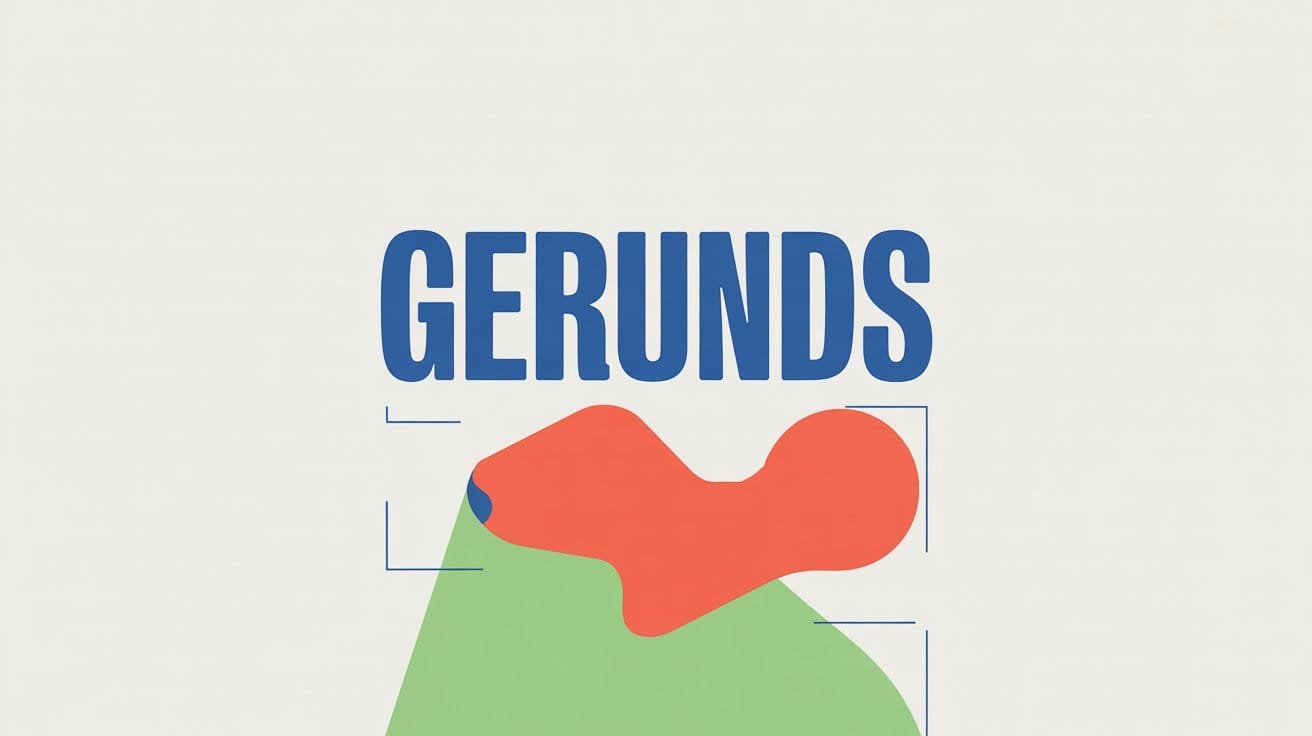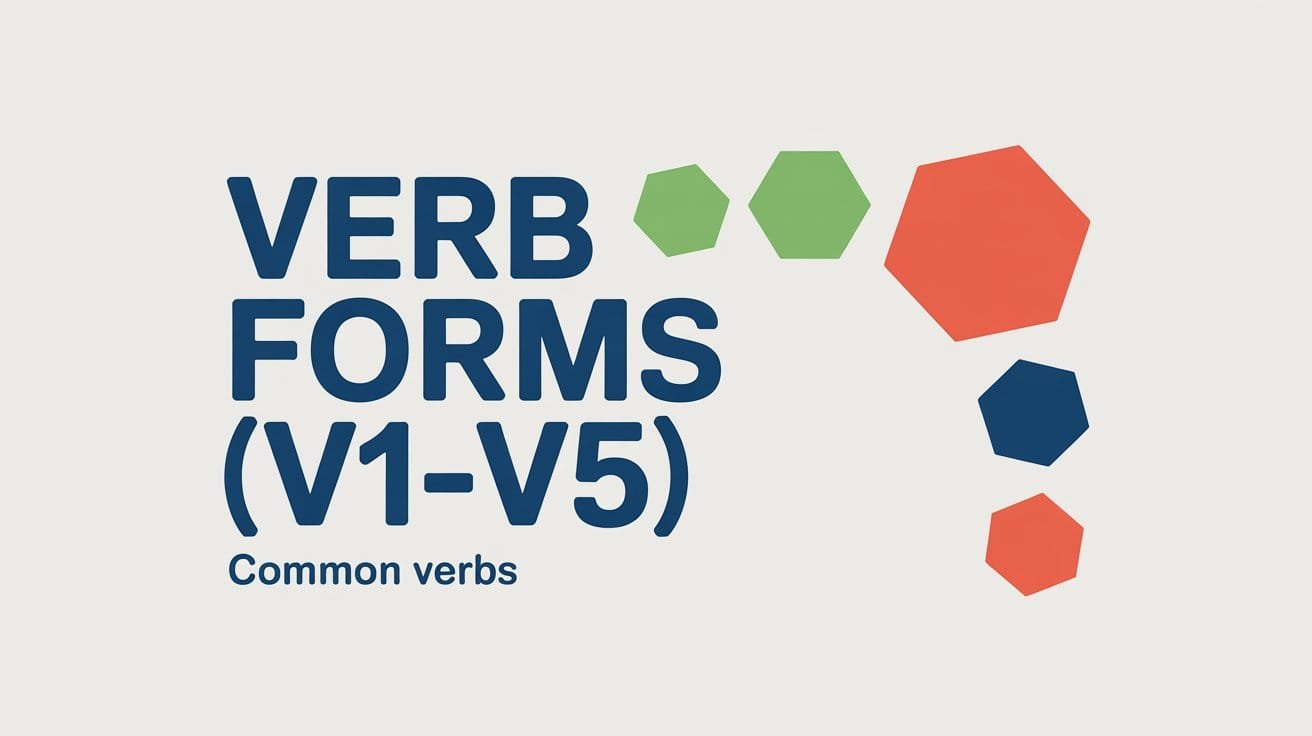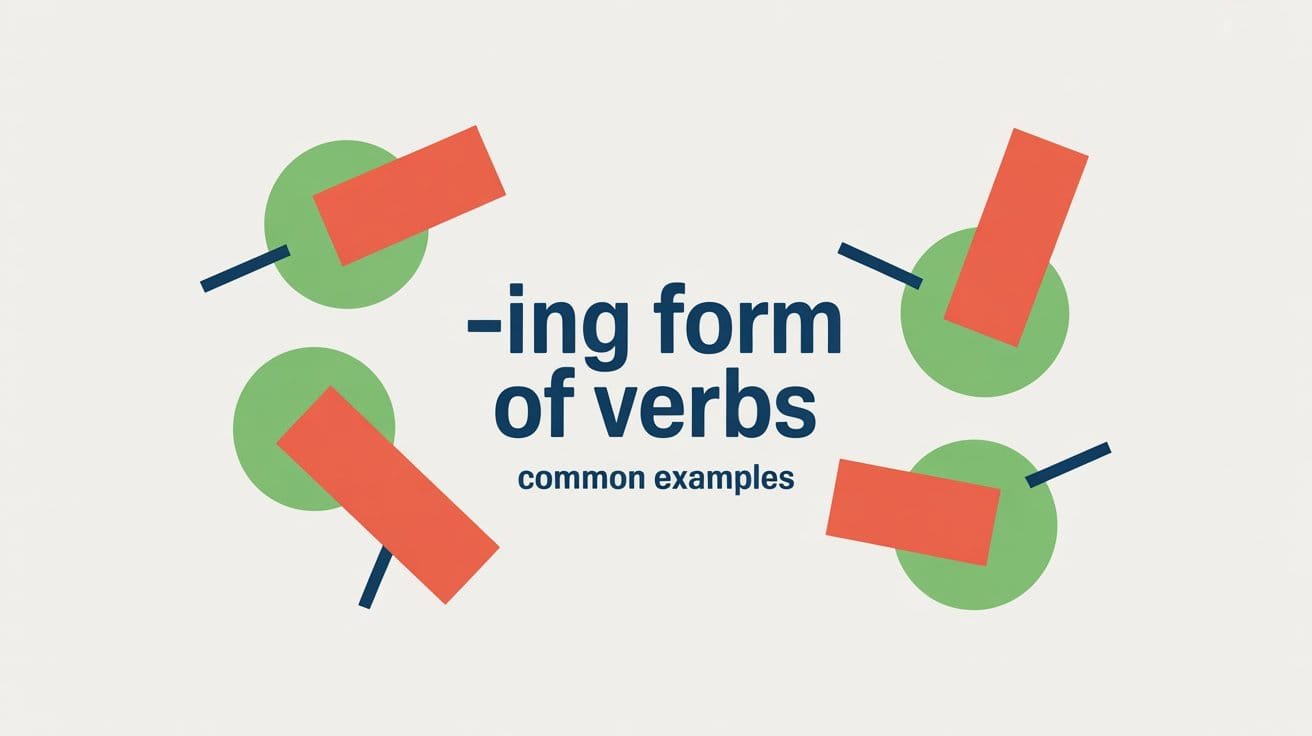In English, words ending in “-ing” are often more than just verbs in action. These words, known as gerunds, act as nouns. They help us talk about activities, experiences, and ideas in a simple, effective way. Whether it’s swimming, reading, or cooking, gerunds are common in everyday conversation and writing. Using them correctly adds variety and clarity to your sentences, making your English more expressive.
This article will explain what gerunds are, how they differ from other “-ing” words, and how to use them effectively in sentences.
What Is a Gerund?
A gerund is a verb form that ends in “-ing” and functions as a noun in a sentence. Even though it looks like a verb, a gerund doesn’t show an action. Instead, it names an activity, idea, or experience. This makes it useful for talking about actions as things. For example, “Swimming is fun.” – Here, swimming is a gerund acting as the subject of the sentence. It names the activity that is fun.
How are Gerunds used in Sentences?
Gerunds are verbs ending in “-ing” that act as nouns in a sentence. They can be used in various ways, including as subjects, objects, subject complements, or objects of prepositions.
To understand how they work, let’s look at different ways they are used:
Gerunds As Subjects
A gerund used as the subject of a sentence can give us the main focus or topic of the sentence, showing what is being discussed or what the action is centered around.
“Reading improves your vocabulary.” Here, reading is the subject, explaining what helps to improve vocabulary. The sentence is focused on the activity of reading.
Gerunds as Objects of Verbs
Gerunds often follow verbs to complete their meaning, especially when the verbs express likes, dislikes, actions, or suggestions. In these cases, gerunds act as nouns in the sentence, either as direct or indirect objects depending on how the sentence is structured.
Gerunds as Direct Objects
When a gerund functions as a direct object, it answers the question what? or whom? after the verb. This shows what the verb’s action is being applied to, helping to specify the activity or concept being focused on.
“Grace enjoys dancing.” In this sentence, dancing is the direct object of the verb enjoys. It answers the question “What does Grace enjoy?” by naming the activity she finds enjoyable.
Gerunds as Indirect Objects
Gerunds can also serve as indirect objects, answering the question to whom? or for whom? the action is done. In these cases, the recipient of the action is not a person but an activity.
“He gave running a try.” Here, running is the indirect object, indicating what he gave a try to. It answers the question “What did he give a try to?” by specifying the activity he attempted.
Gerunds as Objects of Prepositions
Gerunds are often used after prepositions like in, on, at, and others. When a gerund follows a preposition, it tells us more about the action or state that the preposition introduces. This helps clarify the relationship between the verb and the noun in the sentence.
“He is interested in learning new languages.” Here, learning follows the preposition in, explaining what he is interested in. It acts as the object of the preposition in.
Gerunds as Subject Complements
Gerunds can also function as subject complements, helping to describe or explain the subject of the sentence. This usually happens after linking verbs like is, are, was, or were.
“My dream is traveling the world.” In this sentence, traveling acts as the subject complement, explaining what my dream is. It tells us more about the subject.
Gerund Examples in Sentences
- Jogging every morning boosts energy.
- Cooking requires patience.
- He admitted cheating on the test.
- She is excited about starting her new job.
- Their goal was winning the championship.
- My brother enjoys hiking in the mountains.
- Skipping breakfast is not a good idea.
- They are considering buying a new car.
- Apologizing is the first step to reconciliation.
- We discussed leaving early for the airport.
Gerunds vs. Present Participles: What’s the Difference?
Gerunds and present participles are both verb forms that end in “-ing,” which can make them appear identical at first glance. However, their functions within a sentence are distinct, and recognizing these differences leads to more precise and effective communication.
A gerund acts as a noun. It can function as the subject, object, or complement in a sentence, representing an activity or concept. Present participles, however, are used differently. They function either as adjectives or in continuous verb tenses. When used as adjectives, they modify nouns, giving us more detail about them.
For example, in “The swimming fish are colorful,” “swimming” describes the fish by showing their action. In the context of continuous verb tenses, present participles combine with auxiliary verbs to express ongoing actions. For instance, in the sentence “She is reading a book,” “reading” is part of the present continuous tense, showing that the action is happening right now.
How to Tell Them Apart:
To distinguish between a gerund and a present participle, check its role in the sentence:
- If it acts as a noun (subject, object, or complement), it’s a gerund.
- If it describes something or is part of a continuous verb tense, it’s a present participle.
Gerund Phrases
A phrase is a group of words that work together as a single unit within a sentence. In English, there are several types of phrases, each serving a specific purpose. These include noun phrases, verb phrases, adjective phrases, adverb phrases, prepositional phrases, and gerund phrases.
A gerund phrase is a group of words that includes a gerund, its object, and any modifiers. The gerund is the core of the phrase, but it is often accompanied by other words that give more details or context. Like gerunds themselves, gerund phrases always function as nouns in a sentence. For instance, “Swimming in the lake is her favorite summer activity.” Here, “swimming in the lake” is the gerund phrase acting as the subject of the sentence.
Examples of Gerund Phrases:
- Reading books before bed helps you sleep better.
- Eating a healthy breakfast gives you the energy you need for the day.
- He is good at solving complex problems.
- The students are tired of waiting for the bus.
Common Mistakes with Gerunds and How to Avoid Them
While gerunds are an important part of English, they can be tricky, leading to frequent mistakes among learners. By being mindful of these common mistakes, you can improve the accuracy of your gerund usage in English.
Using Object Pronouns Instead of Possessive Pronouns Before Gerunds
A gerund following a preposition should be preceded by a possessive pronoun (my, your, his, her, our, their) instead of an object pronoun (me, you, him, her, us, them). This structure clarifies that the action belongs to the pronoun.
- Incorrect: They insisted on me resigning from the position.
- Correct: They insisted on my resigning from the position.
Confusing Gerunds with Infinitives
Some verbs are followed by gerunds, while others take infinitives (the “to” form of the verb). For instance, “enjoy” is always followed by a gerund. Confusing the two can change the meaning or make the sentence grammatically incorrect.
- Incorrect: She enjoys to dance.
- Correct: She enjoys dancing.
Using Base Verbs Instead of Gerunds After Prepositions
After a preposition, the verb should always be in gerund form. In this case, “in” is the preposition, so it should be followed by “learning” instead of “learn.”
- Incorrect: He is interested in learn new languages.
- Correct: He is interested in learning new languages.
Misusing Gerunds as Subjects
When an activity acts as the subject of a sentence, the gerund form is preferred.
- Incorrect: To swim is good exercise.
- Correct: Swimming is good exercise.
“Swimming” is the subject here, not “to swim.”
Choosing Gerunds When Infinitives Are Required
Some verbs require infinitives rather than gerunds. For example, “decided” is followed by “to go,” not “going.”
- Incorrect: She decided going to the conference.
- Correct: She decided to go to the conference.
Frequently Asked Questions
What is a gerund?
A gerund is a verb form ending in “-ing” that functions as a noun in a sentence. For example, in the sentence “Swimming is fun,” the word “swimming” is a gerund acting as the subject. Unlike a verb, it does not indicate an action being performed but rather serves as the name of an activity or concept.
How are gerunds used in sentences?
Gerunds can play various roles in sentences, including as the subject, direct object, subject complement, or object of a preposition. For instance, in the sentence “Running is good for health,” “running” is the subject. In “She enjoys painting,” the gerund “painting” functions as the direct object.
What is the difference between a gerund and a present participle?
Both gerunds and present participles are formed by adding “-ing” to a verb, but they serve different functions. A gerund acts as a noun, as in the sentence “Dancing brings joy,” where “dancing” names an activity.
In contrast, a present participle functions as an adjective or is used in continuous tenses. For example, in “The dancing couple twirled gracefully,” the present participle “dancing” describes the couple’s action.
Can gerunds be used after prepositions?
Yes, gerunds are commonly used after prepositions. For instance, in the sentence “He is excited about traveling,” the gerund “traveling” follows the preposition “about” and acts as the object of the preposition. This structure is typical in English, as verbs following prepositions are generally in gerund form.



